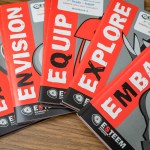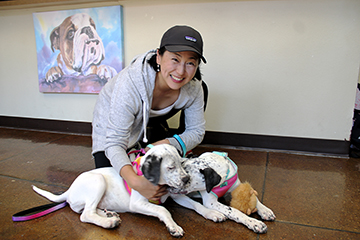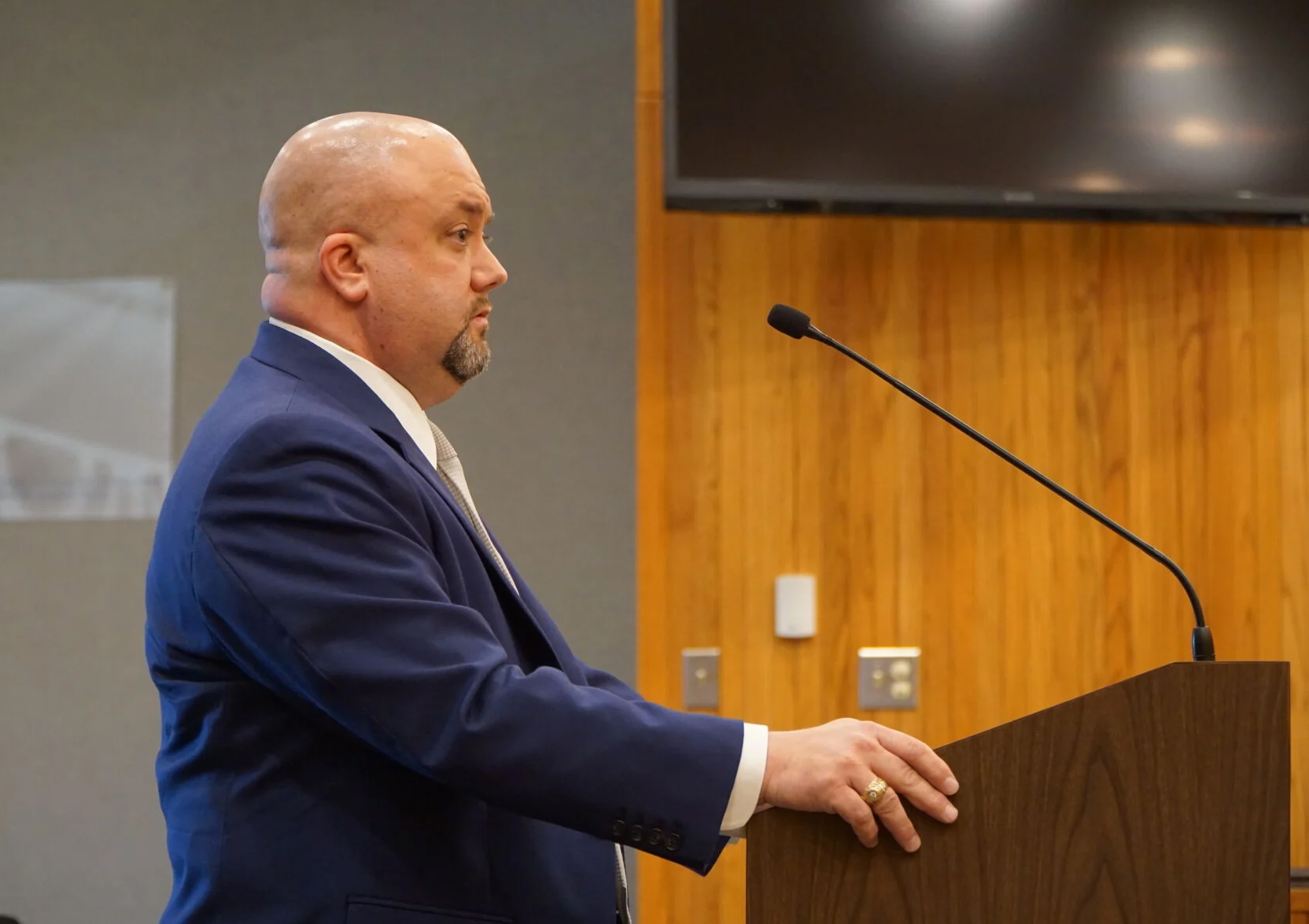ETX VIEW: East Texas native’s curriculum helps youth make smart decisions
Published 5:00 am Saturday, July 5, 2025




Long before she developed the ESTEEM curriculum, Tonya Waite was a quiet girl growing up in East Texas, carrying a growing curiosity about the world and the people in it. It was a visit to a youth homeless shelter that left a lasting impression.
“I was really interested in volunteering, so I found out more and started attending weekly peer mentoring and counseling sessions,” Waite said. “There was a wonderful counselor who worked there – she was incredibly inspiring – and I learned a lot about how other young people were living and the challenges they faced.”
Then Waite discovered an HIV organization just a few blocks away that was seeking youth representatives. She began volunteering with the group and quickly became an active voice, eventually serving as their youth board member.
Trending
“That was really the beginning for me… when I started to see the needs that I hadn’t been aware of before, especially among other young people,” Waite said.
In 1999, Waite became familiar with the Longview Wellness Center – known at the time as Dr. Louis Kirk’s office – which had just received a grant to address teen pregnancy and support youth in local schools. She was hired as part of that initiative and began building youth coalitions by establishing student clubs on campuses in Tyler, Longview and Marshall.
“That was so much fun; I loved working with young people,” Waite said. “Then, fast forward a couple of years, and the nurses, counselors, and teachers at local schools started asking, ‘Hey, when you come onto our campus, do you have any additional information about drugs and alcohol? Or bullying? Or maybe more about pregnancy?’ This was in addition to the pregnancy, STDs, and relationship education we were already providing.
“A few years after that, they started asking for resources on things like media dangers. So over time, we were getting more and more requests for additional materials. The teachers were using the handouts we brought, but they had to make tons of copies. We didn’t have content for multiple grade levels, and they really wanted something that spanned several grades, where the stories and messages wouldn’t just repeat. That was a big deal.”
Unable to find existing resources, Waite approached Dr. Kirk’s office. They agreed to form a collaborative team, bringing together doctors, behavioral health staff, educators, and parents, as well as teens involved in leadership clubs. This collaboration led to the creation and launch of the first ESTEEM workbook in 2004.
“It’s a little different because it’s not a typical health textbook,” Waite said. “I think with help from the medical staff at the clinic, the counselors, and then the school staff, we wanted something that the students could write in like their own journal or a workbook.”
Trending
ESTEEM (Encouraging Students to Embrace Excellent Marriage) aims to equip students in the fifth grade all the way up to 12th with the tools needed to navigate the personal and academic challenges, while also promoting resilience and self-awareness.
“We know that the brain doesn’t fully develop until the mid-20s,” Waite said. “So, giving students the chance to realize that if they’ve been making decisions with the emotional part of their brain – the amygdala – they can experience what it’s like to make decisions from their prefrontal cortex through the exercises in ESTEEM. This part of the brain governs self-control and commitment, and we want them to see that there could be something greater in their future if they learn to use more self-control now.”
The program required a separate workbook for each grade level. One challenge for school districts was the outdated Texas Education Knowledge and Skills (TEKS) standards, which had been in place since 1998 and wouldn’t be updated until 2021.
“With ESTEEM, it made it easier for us to update these every couple of years with the help of our collaborative teams,” Waite said. “So when our schools would come to us and want to add additional messages that they were seeing a need in the school or legislators passed a bill about these topics, we could adjust the information for what our local schools needed.”
Maintaining both compliance and practicality in the workbooks required a coordinated, multi-faceted effort.
“I really have to give credit to our collaborative teams,” Waite said. “I can’t thank our local school districts and our subject matter experts enough. Honestly, if I tried to name everyone who contributed, it would take up pages and pages in your magazine.”
The biggest challenge in developing the ESTEEM curriculum was ensuring an informed and sensitive approach to risk avoidance topics. The team made sure to include disclosures for those who had experienced abuse and focused on promoting healthier behaviors for those involved in risky situations.
“We wanted to empower students to set and pursue big goals without fear,” Waite said.
The TEKS topics addressed in the curriculum go far beyond healthy eating and hygiene, encompassing sensitive issues such as substance abuse, mental health, teen pregnancy, sexual health, physical activity, violence, online risks, accidents, and distracted driving.
“We found that breaking the content into small, manageable sections and having different members of our volunteer teams focus on specific areas made a huge difference,” Waite said. “That approach helped us create a curriculum that schools appreciate and students actually engage with, because these are real concerns they face every day. Our goal is to remove those distractions so students can focus on what matters most: being in school and getting excited about learning science, math, literature, and more – without being derailed by risky behaviors.”
Additionally, the program needed to be adaptable, as it was implemented not only in public schools but also in juvenile justice centers, pregnancy education programs, and pregnancy resource centers. The challenge was ensuring that all participants, regardless of background, received truthful information and had the opportunity to reflect on the consequences of risky behaviors.
“We wanted it to be family-focused and we wanted parents to be involved,” Waite said. “And our teachers suggested that we take our lessons and split it into two workbooks. Workbook A has all the non-sensitive topics, and Workbook B has the sensitive topics.”
The program requires active permission, meaning parents must sign and return a form before their child can participate.
The workbook not only provided a place for students to take notes on the lessons, but it also served as a confidential resource. Teachers would collect the workbooks, lock them in a cabinet, and bring them out the following week for the next lesson.
“We want to raise the bar no matter the situation that students face,” she said. “We want them to be resilient and have a ‘I can do this’ attitude.”
The curriculum is currently being used in 77 public school districts across the state, including Tyler ISD and Longview ISD, and has expanded to Iowa, North Carolina, and Kansas.
When she’s not helping students navigate life’s big questions, Waite is doing a bit of wrangling of her own – on a country homestead in Longview she shares with her husband of 28 years, two teenagers, and a small farm’s worth of chickens, goats, rabbits, cows, and horses, including a baby mustang.
“That’s taught me a lot of lessons on patience and is very similar to working when it comes to communication skills,” Waite said. “I’ve become very aware of my nonverbal communication skills just watching and being around animals, specifically horses. I think that there’s a tie and a connection between people and animals.”
Waite attended Hallsville public schools before completing her final two years of high school through Texas Tech’s homeschooling program. Although her professional path eventually led to curriculum design and grant writing, these were not part of her original career aspirations.
“I just wanted to be a mom,” she said. “I wanted to have a large family, and I wanted to volunteer in my community. And maybe one day I will finish my marriage and family degree, but right now I think just continuing on the path of building up and helping those around me… it’s where I’ve been placed.”
For more information, visit esteemjourney.com.












